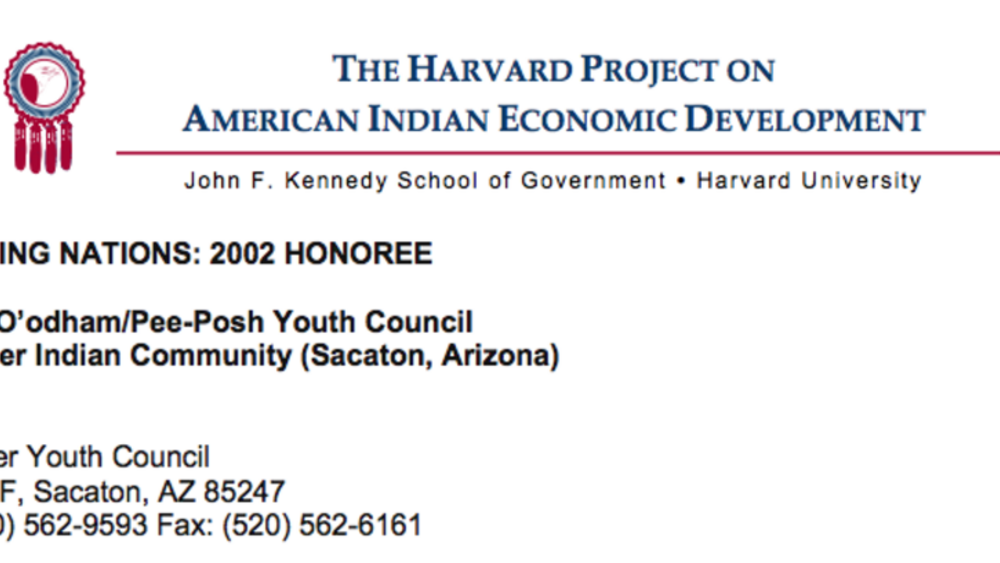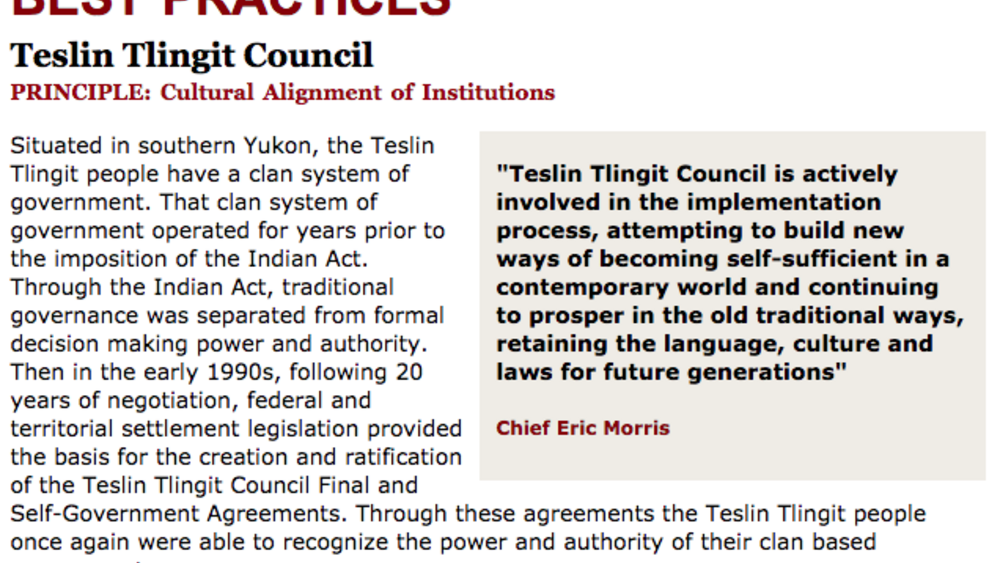Gila River Indian Community, which borders the Arizona cities of Tempe, Phoenix, Mesa, and Chandler, has nearly 17,000 tribal citizens. Half of the population is younger than 18. Like youth elsewhere, Gila River youth are challenged by a host of problems. Gang violence, drug and alcohol abuse, and teen pregnancy are particularly acute on the 372,000-acre reservation.
Until the late 1980s however, Gila River youth had little or no avenue to participate in decision-making related to these and other matters affecting them. This was the result, in part, of their government's own attitude about youth and their role in the community. As one Gila River leader acknowledged, "the tribal government has always focused on the elders, but youth and their issues were historically overlooked."
Formed in 1987 and chartered under the laws of the Gila River Indian Community, the Akimel O'odham / Pee-Posh Youth Council (the Youth Council) gives youth a formal voice in tribal governance and prepares the next generation of leadership...
Additional Information
National Centre for First Nations Governance. "Best Practices Case Study (Participation in Decision Making): Gila River Indian Community." A Report for the National Centre for First Nations Governance. The National Centre for First Nations Governance. Canada. June 2009. Case Study. (https://fngovernance.org/wp-content/uploads/2020/06/PDM_GilaRiver.pdf, accessed March 8, 2023)



